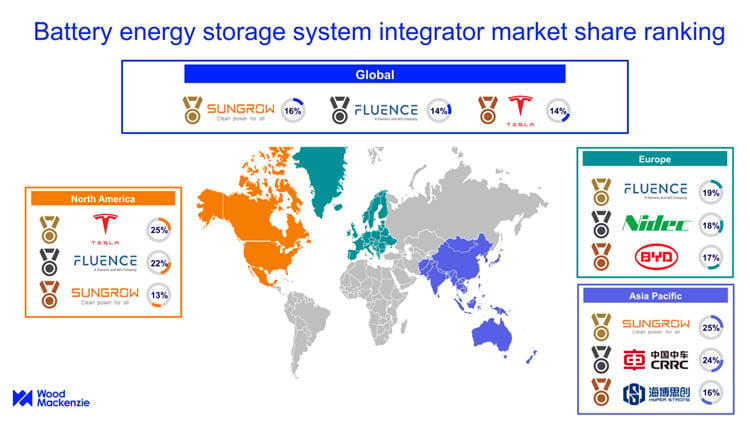Report on PJM Interconnection Governance and its Impact on Sustainable Development Goals
1. Executive Summary: State Governors Demand Governance Reform to Align with SDGs
A bipartisan coalition of nine state governors is advocating for significant governance reforms at PJM Interconnection, the largest regional transmission organization in the United States. The governors’ actions are driven by concerns that PJM’s current operational and planning failures are impeding progress toward key Sustainable Development Goals (SDGs), particularly SDG 7 (Affordable and Clean Energy), SDG 9 (Industry, Innovation, and Infrastructure), and SDG 13 (Climate Action). The coalition seeks greater state-level influence over PJM’s Board of Managers to ensure the grid operator’s strategies align with state energy policies and economic development objectives.
- Primary Demand: The authority for states to nominate candidates for two open seats on the PJM Board of Managers.
- Secondary Demand: The establishment of a formal advisory group of PJM governors to provide continuous input to the board.
- Core Rationale: To address PJM’s “multi-year inability” to integrate new generation sources, which undermines state efforts to build a reliable, affordable, and clean energy infrastructure, thereby hindering economic growth (SDG 8) and climate action (SDG 13).
2. Challenges to SDG 7: Affordable and Clean Energy
PJM’s operational difficulties present direct challenges to the achievement of SDG 7. Delays in connecting new, predominantly clean, energy sources to the grid have created an artificial scarcity that drives up costs for consumers and slows the transition away from fossil fuels.
- Interconnection Queue Backlog: As of March, PJM’s interconnection queue, closed since 2022, contained approximately 70,281 megawatts of stalled projects. These delays directly obstruct the expansion of clean energy infrastructure.
- Impact on Virginia: The state has 37,751 megawatts of projects delayed in the queue, with about 30,000 megawatts comprising solar, battery storage, or hybrid solar-storage projects. This directly conflicts with the state’s Virginia Clean Economy Act, which mandates a transition to carbon-free electricity by 2045 in alignment with SDG 13.
- Affordability Crisis: The failure to bring new generation online contributes to price surges in PJM’s capacity market. The Energy Information Administration projected PJM would have the highest wholesale power prices in the summer, at $57 per megawatt-hour, directly impacting the affordability component of SDG 7.
3. Implications for SDG 8, 9, and 11: Economic Growth, Infrastructure, and Sustainable Communities
The grid’s capacity constraints and planning deficiencies have significant consequences for sustainable economic development, infrastructure modernization, and the viability of communities, as outlined in SDGs 8, 9, and 11.
- Rising Energy Demand: PJM projects a substantial increase in electricity demand, rising to nearly 225,000 megawatts by 2040, largely driven by the growth of data centers. This highlights the urgent need for resilient and innovative infrastructure (SDG 9).
- Economic Opportunity Cost: The governors’ letter states that long-term transmission planning failures have “deprived our states of thousands of jobs and billions of dollars in investment,” a direct setback to achieving SDG 8 (Decent Work and Economic Growth).
- Reliability and Community Impact: PJM’s inability to manage the grid effectively during extreme weather events, coupled with high costs, threatens the reliability of power for 67 million people, undermining the goal of creating sustainable and resilient communities (SDG 11).
4. Call for Institutional Reform in Alignment with SDG 16
The core of the governors’ initiative is a call for institutional reform to make PJM a more effective, accountable, and transparent institution, as envisioned in SDG 16 (Peace, Justice, and Strong Institutions). The current governance structure is seen as a barrier to progress.
- Governance Deficit: The governors expressed deep concern over “halting, inconsistent steps and rising internal conflicts” within PJM, culminating in the departure of board members and the CEO.
- Proposed Solution: By demanding a formal role in board nominations and ongoing consultation, the states aim to ensure that PJM’s leadership is responsive to the public interest and state-level policy mandates for clean energy.
- Legitimacy and Trust: The letter argues that board-level representation of state perspectives is “essential to preserving PJM’s legitimacy,” especially as the organization faces decisions that could substantially raise consumer bills.
5. Conflicting Approaches to SDG 13: Climate Action
A fundamental disagreement exists between PJM and its critics regarding the path to achieving climate action goals (SDG 13) while maintaining grid reliability.
- PJM’s Perspective: The PJM board chairman attributes grid strain to state and federal policies that have “pushed a meaningful amount of generation capacity into retirement” and discouraged new fossil fuel entry needed to support renewables.
- Clean Energy Advocates’ Rebuttal: Critics call PJM’s response “nonsensical,” pointing to other grid operators like ERCOT (Texas) and SPP (Midwest) that manage larger shares of renewable energy without similar reliability crises. They argue PJM’s position protects the “status quo profits” of fossil fuel interests.
- Manufactured Scarcity: Advocacy groups contend that PJM’s proposed solutions, such as the Reliability Resource Initiative, disproportionately fast-track fossil fuel projects and that the current crisis is a “very manufactured scarcity” resulting from institutional inertia and a failure to adapt to a modern, clean energy grid.
Analysis of Sustainable Development Goals (SDGs) in the Article
SDG 7: Affordable and Clean Energy
This is the most prominent SDG in the article. The core conflict revolves around the difficulty of getting “clean and affordable energy sources onto the grid.”
- The goal of ensuring affordable energy is highlighted by concerns that decisions by PJM “could substantially raise consumer bills” and the observation of price surges in the capacity market, with prices reaching “$3,700 per megawatt hour in PJM’s territory” during a heatwave.
- The goal of clean energy is central to the discussion. The article details how “about 30,000 of those megawatts [in the queue] coming from solar, storage and solar and storage projects” are being delayed. It also references the “Virginia Clean Economy Act,” which mandates a transition to a “clean one to address climate change.”
SDG 9: Industry, Innovation, and Infrastructure
The article is fundamentally about energy infrastructure—the regional electric grid—and the need for its modernization and expansion.
- The need for resilient infrastructure is evident in the discussion of PJM’s “multi-year inability” to get new generation online and the challenges of “long-term transmission planning.”
- The article points to a massive infrastructure challenge with “about 70,281 megawatts of projects as of March stuck in what is called an interconnection queue.” This backlog prevents the grid from adapting to new, cleaner technologies and meeting rising demand.
SDG 8: Decent Work and Economic Growth
The governors explicitly link the grid’s operational failures to negative economic consequences for their states.
- The letter from the governors states that PJM’s planning failures have “deprived our states of thousands of jobs and billions of dollars in investment that may flow to other regions.” This directly connects energy policy and infrastructure management to job creation and economic investment.
SDG 13: Climate Action
The transition to clean energy is explicitly framed as a response to climate change.
- The article mentions that the “Virginia Clean Economy Act” was passed to “transition Virginia’s electric grid to a clean one to address climate change.” This shows the integration of climate action into state-level energy policy, a key aspect of SDG 13.
SDG 16: Peace, Justice, and Strong Institutions
A significant portion of the article addresses issues of governance, accountability, and institutional effectiveness.
- The governors’ demand for the “power to nominate candidates to fill two seats on the regional grid operator’s Board of Managers” and the creation of a “formal group of the PJM governors” is a direct call for more inclusive, participatory, and representative decision-making within PJM.
- Concerns about PJM’s legitimacy, rising internal conflicts, and the “abrupt termination of two long-standing members of the Board” point to a crisis in institutional governance.
Identified SDG Targets
SDG 7: Affordable and Clean Energy
- Target 7.1: By 2030, ensure universal access to affordable, reliable and modern energy services. The article’s focus on rising consumer bills, high wholesale prices (“$57 a megawatt hour, a $10 increase from last summer”), and the risk of “adverse reliability… impacts on customers” directly relates to this target.
- Target 7.2: By 2030, increase substantially the share of renewable energy in the global energy mix. The article highlights the 30,000 megawatts of solar and storage projects stuck in the interconnection queue and Virginia’s legal mandate to build out solar and wind, which are efforts to increase the share of renewables.
- Target 7.a: By 2030, enhance international cooperation to facilitate access to clean energy research and technology… and promote investment in energy infrastructure and clean energy technology. The collaboration of the “bipartisan group of governors” to fix PJM and enable the buildout of a “clean grid for our region” reflects the spirit of this target at a regional level.
SDG 9: Industry, Innovation, and Infrastructure
- Target 9.1: Develop quality, reliable, sustainable and resilient infrastructure… to support economic development and human well-being. The entire conflict is about the failure of the PJM grid infrastructure to be reliable and to support the integration of sustainable energy sources, which in turn hinders economic development.
- Target 9.4: By 2030, upgrade infrastructure and retrofit industries to make them sustainable, with increased resource-use efficiency and greater adoption of clean and environmentally sound technologies. The need to reform the “interconnection queue” to allow solar, wind, and storage projects onto the grid is a direct effort to upgrade infrastructure for cleaner technologies.
SDG 8: Decent Work and Economic Growth
- Target 8.2: Achieve higher levels of economic productivity through diversification, technological upgrading and innovation. The governors’ claim that grid delays have cost their states “thousands of jobs and billions of dollars in investment” shows that failing to upgrade energy technology and infrastructure is hindering economic productivity and growth.
SDG 13: Climate Action
- Target 13.2: Integrate climate change measures into national policies, strategies and planning. The “Virginia Clean Economy Act,” which “mandates retirement of carbon-emitting electricity sources by 2045,” is a clear example of integrating climate change measures into state-level energy strategy and planning.
SDG 16: Peace, Justice, and Strong Institutions
- Target 16.7: Ensure responsive, inclusive, participatory and representative decision-making at all levels. The governors’ letter demanding a “seat at the table” and the power to nominate board members is a direct attempt to make PJM’s decision-making process more responsive and representative of state interests.
Implied Indicators for Measuring Progress
SDG 7: Affordable and Clean Energy
- Indicator: Wholesale and retail electricity prices. The article provides specific figures, such as prices reaching “$3,700 per megawatt hour” and projected wholesale prices of “$57 a megawatt hour,” which can be tracked to measure affordability.
- Indicator: Megawatts (MW) of renewable energy capacity added to the grid. The article mentions “about 30,000 of those megawatts coming from solar, storage and solar and storage projects” are currently delayed. Tracking the approval and connection of these projects would measure progress.
SDG 9: Industry, Innovation, and Infrastructure
- Indicator: Size and processing time of the interconnection queue. The article states there are “70,281 megawatts of projects as of March stuck in what is called an interconnection queue.” A reduction in this number and the time projects spend in the queue would indicate progress.
- Indicator: Projected vs. actual electricity demand and supply. The article cites PJM’s projections for rising demand (e.g., to “just under 225,000 megawatts of electricity demand in 2040”). Measuring the grid’s ability to meet this demand is a key indicator of infrastructure resilience.
SDG 8: Decent Work and Economic Growth
- Indicator: Investment and jobs created in the energy sector. The governors’ claim of losing “thousands of jobs and billions of dollars in investment” implies that tracking these figures for approved energy projects would be a measure of success.
SDG 13: Climate Action
- Indicator: Share of carbon-emitting sources in the energy mix. The “Virginia Clean Economy Act” mandates the retirement of these sources by 2045/2050. Tracking the percentage of energy generated from fossil fuels versus renewables over time would measure progress towards this policy goal.
SDG 16: Peace, Justice, and Strong Institutions
- Indicator: Composition of the PJM Board of Managers. Whether the governors succeed in getting the “power to nominate candidates” and have their nominees appointed would be a direct indicator of more inclusive governance.
| SDGs | Targets | Indicators |
|---|---|---|
| SDG 7: Affordable and Clean Energy |
7.1: Ensure access to affordable, reliable energy. 7.2: Increase the share of renewable energy. |
Wholesale electricity prices (e.g., “$57 a megawatt hour”). Megawatts of renewable projects (solar, wind, storage) connected to the grid from the queue (e.g., “30,000 megawatts”). |
| SDG 8: Decent Work and Economic Growth | 8.2: Achieve higher levels of economic productivity through technological upgrading. | Number of jobs and amount of investment ($) lost or gained due to grid connection delays/approvals (e.g., “thousands of jobs and billions of dollars in investment”). |
| SDG 9: Industry, Innovation and Infrastructure |
9.1: Develop quality, reliable, sustainable and resilient infrastructure. 9.4: Upgrade infrastructure for clean technologies. |
Total megawatts of generation capacity in the interconnection queue (e.g., “70,281 megawatts”). Average time for projects to clear the interconnection queue. |
| SDG 13: Climate Action | 13.2: Integrate climate change measures into policies and planning. | Implementation of policies like the “Virginia Clean Economy Act” and progress towards its carbon-emission retirement deadlines (2045/2050). |
| SDG 16: Peace, Justice and Strong Institutions | 16.7: Ensure responsive, inclusive, and representative decision-making. | Changes in the PJM board nomination process to include state governor input; creation of a “formal group of the PJM governors.” |
Source: insideclimatenews.org







